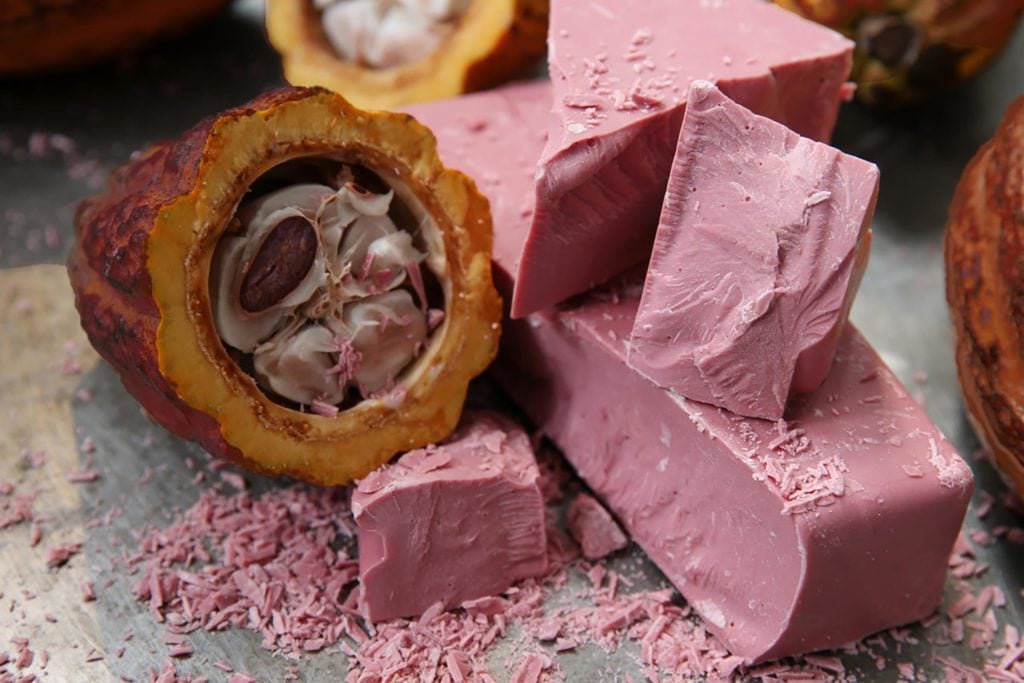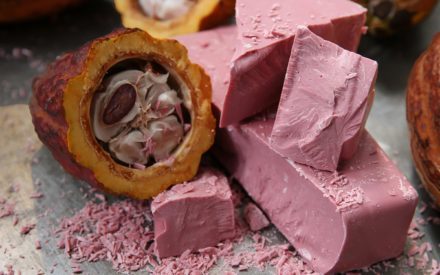 There’s white chocolate, dark chocolate, and just plain milk chocolate… and then there’s ruby chocolate, the stuff of Instagram dreams. Yes, you read that right—pink chocolate does exist, and it could hit the market soon.
There’s white chocolate, dark chocolate, and just plain milk chocolate… and then there’s ruby chocolate, the stuff of Instagram dreams. Yes, you read that right—pink chocolate does exist, and it could hit the market soon.
Swiss manufacturer Barry Callebaut just announced that it has invented the very first pink-hued cocoa, called ruby chocolate. Each bite has a fruity, berry-like flavor, thanks to the Ruby cocoa beans the chocolate is made from. The Ruby bean grows in countries like Ecuador, Brazil, and the Ivory Coast; those specific beans, along with a unique manufacturing process, create this one-of-a-kind chocolate. (These chocolates, on the other hand, have unbelievable health benefits.)
“The fourth type [of] chocolate offers a totally new taste experience, which is not bitter, milky or sweet, but a tension between berry fruitiness and luscious smoothness,” Barry Callebaut said in a press release. “To create Ruby chocolate, no berries or berry flavor, nor color, is added.”
Nearly 80 years ago, Nestle introduced its original white chocolate. That was the last time a new kind of natural chocolate was invented—until now. Barry Callebaut spent about 10 years developing its own recipe for ruby chocolate, CEO Antoine de Saint-Affrique told Bloomberg.
“It’s natural, it’s colorful, it’s hedonistic, there’s an indulgence aspect to it, but it keeps the authenticity of chocolate,” Saint-Affrique said. “It has a nice balance that speaks a lot to millennials.”
Hold your sweet tooth, though! Unfortunately, it might take up to a year and a half before you’ll find ruby chocolate in your nearest grocery store, a company spokesperson told TODAY. If you’re really desperate, you can sign up to be a professional chocolate taster in the meantime. Get to know the little-known secrets about their awesome jobs.
As for us, we just can’t wait to see the Instagram photos that come out of this invention. You can prepare for the big day by memorizing these tricks for taking amazing, Instagram-worth food photos on your smartphone.

Comments
Post a Comment